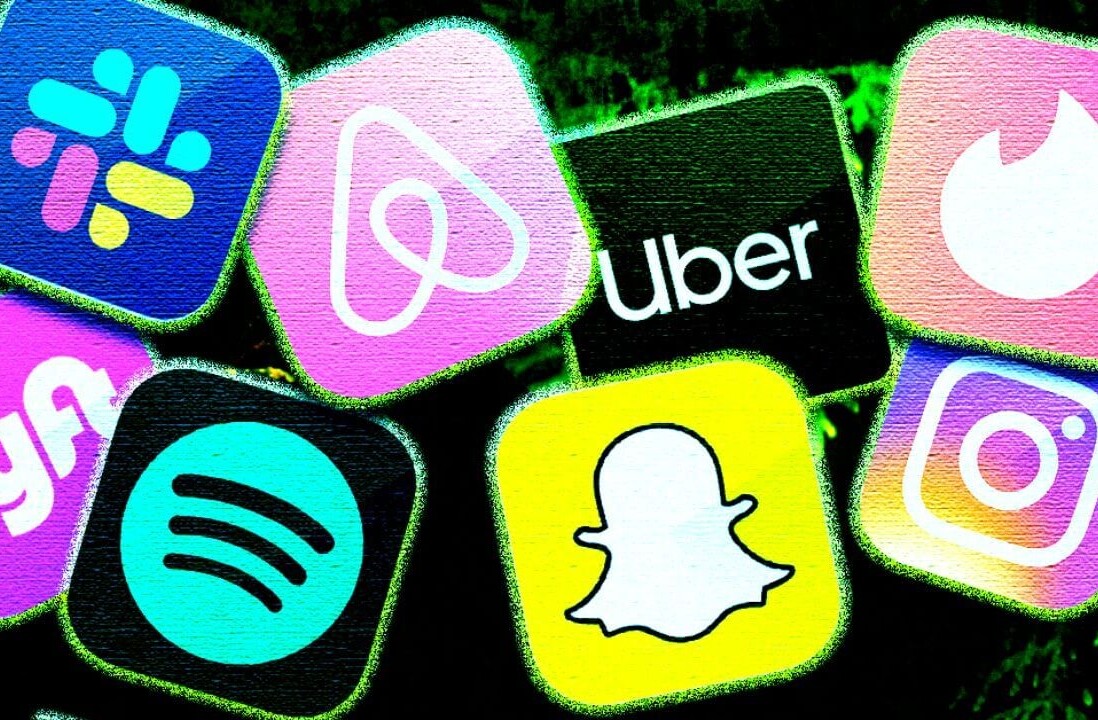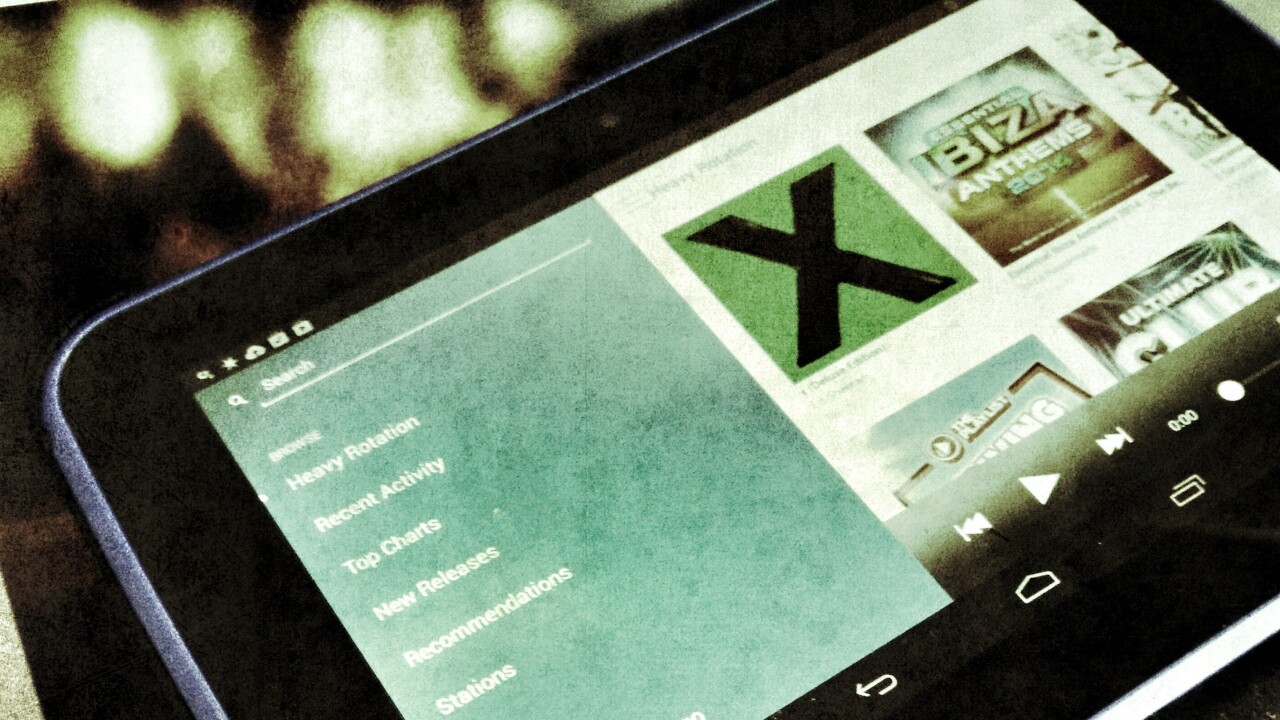
There’s no shortage of apps to help you discover new music. Some are slaves to algorithms, some depend on human-curation, while some combine the best of both worlds. There’s been a flurry of activity in the music-streaming space of late, with seemingly every company wanting a piece of the music-subscription pie – even Samsung has launched its own Pandora-style service.
But here, we want to take a look at all the main players from the on-demand realm, companies that try to replicate your personal music-collection in the cloud, with around 20 million additional tracks thrown in for good measure. For that reason, we’re giving the likes of Pandora and the recent Google acquisition Songza a miss here.
This is really designed to serve as an at-a-glance breakdown of who offers what, where it’s available, and provide a snapshot of the main salient points you might care about before taking the plunge.
Device limits vary slightly from service-to-service for offline mode, and we outline here what these restrictions are. Furthermore, all the services here that have a ‘free’ offering on mobile are generally restricted to a shuffle-style ‘radio’ mode, so no on-demand. Still, it’s useful to know which services do offer a gratis incarnation.
We have paginated this to make it easier to read, but if you’re not a fan, you can click here to read it as a single page. Anyway, without further ado, here’s eleven on-demand music-subscription services compared, kicking off with Spotify.
Spotify
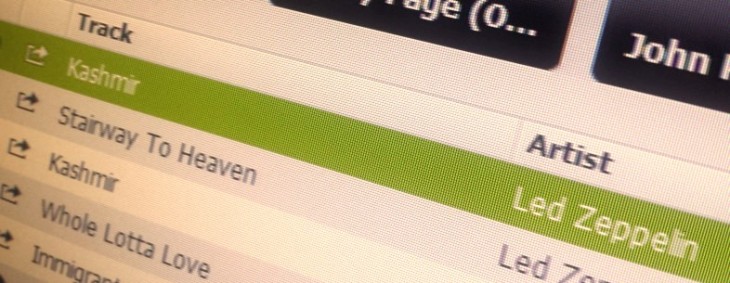
One of Europe’s greatest tech success stories, Sweden’s Spotify is a stalwart of the subscription music-streaming space, and is a market-leader in many respects. It’s available in many markets across multiple platforms, offers 22 million tracks, and there is a free ad-supported version of the service on mobile.
What? Spotify
Where? More than 50 markets
How much (USD/Euro/GBP)? Free: (ad-supported), Premium: $9.99/€9.99/£9.99 (varies globally)
Platforms? Web | Desktop | Android | iOS | Windows Phone
Device limit (offline mode): 3 (10,000 song limit, or 3,333 songs maximum per-device)
Audio quality: Up to 320Kbps
Pros: Global, cross-platform, extensive library, free version on mobile
Cons: No Chromecast support on mobile, limited number of tracks and devices for offline access
➤ Spotify
Deezer

Deezer is largely like Spotify, insofar as you have a vast library of music (30 million tracks) to listen to on-demand across multiple platforms, while it follows an identical pricing model too. But it’s not available in the US as of yet, which will likely be its biggest launch when (as is expected) it finally happens.
What? Deezer
Where? More than 200 markets
How much (Euro/GBP)? Free: (ad-supported), Premium: $4.99/€4.99/£4.99 (no longer offered to new subscribers), Premium+: €9.99/£9.99
Platforms? Web | Desktop | Android | iOS | Windows Phone
Device limit (offline mode): 5 (6 including desktop)
Audio quality: Up to 320Kbps
Pros: Good global coverage, cross-platform, extensive library, Chromecast support, high number of devices for offline syncing, free version on mobile
Cons: Not available in the US, no Windows desktop app (just Windows 8 and Mac beta)
➤ Deezer
Rdio

Rdio offers a comprehensive selection of tunes à la all the best music-streaming platforms such as Spotify and Deezer. While it offers no free incarnation outside the US beyond trial periods, it does have a reasonably big differentiator with family subscription plans that get increasingly cheaper the more people that are added – two accounts cost $17.99 per month, three costs the main subscriber $22.99, and so on. You can also register an unlimited number of devices to your account, to use in offline mode or otherwise, though you’ll only be able to play on one device at any given time unless you keep all devices ‘offline’.
What? Rdio
Where? 60 markets
How much (USD/Euro/GBP)? Free: (limited to 6-months outside the US & Australia, free on mobile only available in US, Canada and Australia), Rdio Unlimited: $9.99/€9.99/£9.99
Platforms? Web | Desktop [Mac / Windows] | Android | iOS | Windows Phone
Device limit (offline mode): Unlimited
Audio quality: Up to 320Kbps
Pros: Global, cross-platform, no device limits for offline listening, extensive library, Chromecast support, discounts for families
Cons: Geographically-restricted free service
➤ Rdio
Rara.com
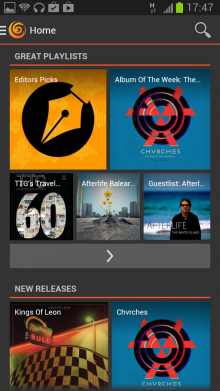

Launched back in 2011, Rara.com is striving to tackle the music-streaming market from a slightly different angle, and claims not to compete with heavyweights such as Spotify. However, it clearly is competing with such services, though it is targeting non-digital adopters with a simple interface, and high-quality audio.
What? Rara.com
Where? 32 markets
How much (USD/Euro/GBP)? Web: $4.99/€4.99/£4.99, Premium: $9.99/€9.99/£9.99
Platforms? Web | Android | iOS | Windows 8
Device limit (offline mode): 3
Audio quality: Dolby Pulse (320kbps)
Pros: Quality audio, extensive library (22m tracks), auto-caching of songs for offline playback,
Cons: No free service, no Chromecast support, no desktop apps for Mac/Windows 7, not as globally extensive as competitors
➤ Rara.com
Google Play Music All Access

Google entered the increasingly competitive music-streaming space last year with All Access, a service that’s integrated into its broader Google Play Music offering. Read our full review here.
What? Google Play Music All Access
Where? 34 markets
How much (USD/Euro/GBP)? $9.99/€9.99/£9.99
Platforms? Web | Android | iOS
Device limit (offline mode): 4
Audio quality: Up to 320Kbps (depending on internet quality)
Pros: Extensive library, Chromecast support, part of Google’s broader Play Music service
Cons: Not as globally extensive as others, no apps for desktop/iPad/Windows Phone, no AirPlay support, no free version
➤ Google Play Music All Access
Sony Music Unlimited

Sony launched its Music Unlimited service in the UK and Ireland way back in 2010, and it has been rolling it out gradually to more countries ever since. It offers an extensive library of music across multiple devices, including its games console.
What? Sony Music Unlimited
Where? 19 markets
How much (USD/Euro/GBP)? Access: $4.99/€4.99/£4.99 (Web/Playstation only) Premium: $9.99/€9.99/£9.99
Platforms? Web | Android | iOS
Device limit (offline mode): 3
Audio quality: Up to 320Kbps
Pros: Chromecast support, extensive library (25 million tracks)
Cons: No free service, not extensive global coverage, no apps for desktop/iPad/Windows Phone
Xbox Music

Still a fairly new service, Microsoft’s Xbox Music service incorporates three core elements – Xbox Music Store (music to purchase), which is available in 24 markets; Xbox Music Pass (Spotify-style on-demand streaming), which is available in 22 markets; and a free music-streaming service that’s available in 15 markets.
What? Xbox Music Pass
Where? 22 markets
How much (USD/Euro/GBP)? Free (only in 15 countries, ad-supported, Web & Windows 8 only), Xbox Music Pass $99.90/year or $9.99/month, €99.90/year or €9.99/month, £89.90/year or £8.99/month
Platforms? Web | Windows 8 | Android | iOS | Windows Phone | (Xbox too, of course)
Device limit: 4
Audio quality: Up to 192Kbps
Pros: Fairly cross-platform, extensive library (38m tracks), part of the broader Xbox Music service (purchase music)
Cons: No iPad support, no desktop apps, no Chromecast support on mobile, no free mobile service
Napster
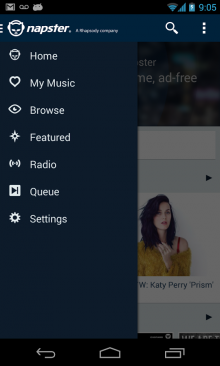
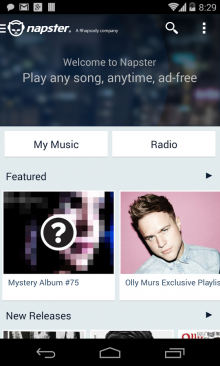
Napster used to be a name synonymous with (illegal) music-sharing, but it has changed hands numerous times and has long since cleaned up its act and operates very legitimately under the ownership of Rhapsody.
What? Napster
Where? 16 markets (Europe only)
How much (Euro/GBP)? Napster Unlimited (no mobile): €5/£5, Napster Unlimited (including mobile): €10/£10
Platforms? Web | Desktop | Android | iOS | Windows Phone
Device limit (offline mode): 3 (4 including desktop)
Audio quality: Up to 192Kbps
Pros: Cross-platform, extensive library (32m tracks), Chromecast support
Cons: No free version, restricted to Europe (though Rhapsody is in the US), limited audio quality
➤ Napster
Rhapsody

Strictly speaking, Rhapsody is a US-only subscription streaming service, but through its Napster brand (see above) it’s available in Europe too. It offers a Pandora-style internet radio tier, with a more expensive full service ramping things up to an all-encompassing, Spotify-style, on-demand streaming platform.
What? Rhapsody
Where? US
How much (USD)? unRadio (no on-demand): $4.99, Rhapsody Premier: $9.99
Platforms? Web | Desktop [Windows only] | Android | iOS | Windows Phone
Device limit (offline mode): 3 (4 including desktop)
Audio quality: Up to 192Kbps
Pros: Cross-platform, extensive library (32m tracks), Chromecast support
Cons: US-only (though its Napster subsidiary is available in Europe), no Mac app, no free version, relatively expensive basic tier with no on-demand, limited audio quality
➤ Rhapsody
Qobuz

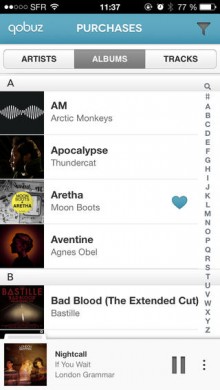
Qobuz finally opened up beyond France in December last year, bringing its super high-quality audio service to Germany, the UK, Ireland, Netherlands, Belgium, Luxembourg, Switzerland and Austria.
Qobuz is for audiophiles, and sells itself as the “world leader for HD Music,” delivering 17-million tracks for streaming and downloading. The worst audio quality you’ll get is 320Kbps on the Basic and Premium services, while the Hi-Fi tier will bump that up to FLAC 16 bit/44.1 kHz (or 1411.2Kbps). Notably, it offers 4,000 albums at a stonking 24 bit/192 kHz, or roughly the equivalent of 2116.8Kbps. This is known as Studio Master HD quality.
What? Qobuz
Where? 9 markets [Europe only, US & Canada are coming soon though]
How much (EUR & GBP)? Basic: €4.99 (PC/Mac only, 320Kbps), Qobuz Premium: €9.99 (unlimited, cross-platform, limited to 320Kbps), Qobuz Hi-Fi: €19.99. Annual subscriptions are also available for €58.99, €99.99 and €199.99 respectively.
Platforms? Web | Desktop | Android | iOS
Device limit (offline mode): 3
Audio quality: 320Kbps minimum, going all the way up to an equivalent of 2116.8Kbps
Pros: Stellar audio quality
Cons: Relatively expensive top tier, no Chromecast support, no free version, limited global availability, not as extensive library of music as competitors (17m tracks)
➤ Qobuz
Beats Music
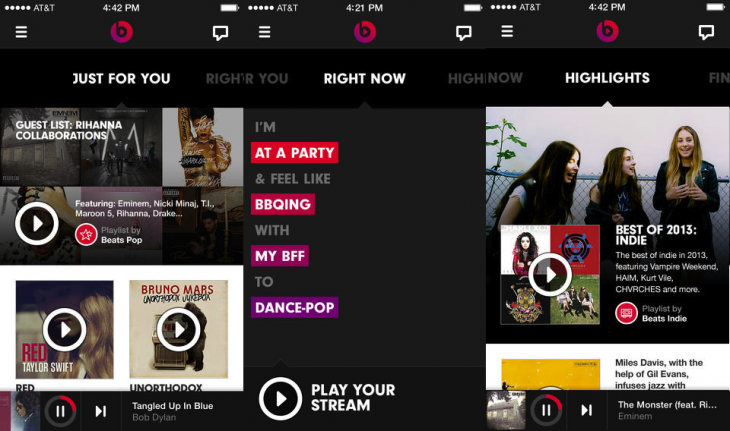
Dr. Dre’s Beats brand got one helluva lot more ‘cool’ when Apple snapped up the company, which includes a music-streaming service, for $3 billion. On a broad level, Beats Music brings a similar offering to the table as something like Spotify. Except it goes for the ‘personalization’ jugular, analyzing your music tastes based on your age, gender and other facets of your life, both past and present. But it’s US-only for now, and there is no free service.
What? Beats Music
Where? US
How much (USD)? $9.99/month or $99.99/year ($8.33/month equivalent)
Platforms? Web | Android | iOS | Windows Phone
Device limit (offline mode): 3 (individual accounts), up to 10 (family account (AT&T only)
Audio quality: Up to 320Kbps
Pros: Fairly cross-platform, extensive library, cheaper than some of the competition with annual plan, family accounts (AT&T only)
Cons: Only available in the US, no desktop apps, no Chromecast support for mobile, no free version
The choice is yours…
These are just eleven on-demand music-subscription services. While Spotify is often held aloft as the poster child of what is becoming an increasingly busy market, its 10,000 tracks and 3 devices offline restriction may sway you towards something like Deezer, which offers unlimited tracks across five devices (six including PC). However, Deezer isn’t yet available for those in the US. Then there’s Rdio, which doesn’t stipulate any device restrictions, however it doesn’t offer a permanently-free tier outside a handful of countries.
Conversely, you may prefer high-quality audio as opposed to a gargantuan library of the latest hits, therefore the fast-expanding Qobuz service might be worth checking out.
However, you may wish to forgo all these services listed above and decide for yourself how much you want to pay for music, in which case something like Radical.fm’s US-only donation-based alternative might float your boat, though it has no on-demand incarnation just like Pandora. And then there’s Amazon Prime Music, which is completely free to Amazon Prime subscribers Stateside, but it does only have a library of around one million songs.
It’s clear there’s plenty of choice, but when deciding which platform to plump for, it pays to focus on the finer details of what exactly you’re getting for your money.
Get the TNW newsletter
Get the most important tech news in your inbox each week.

